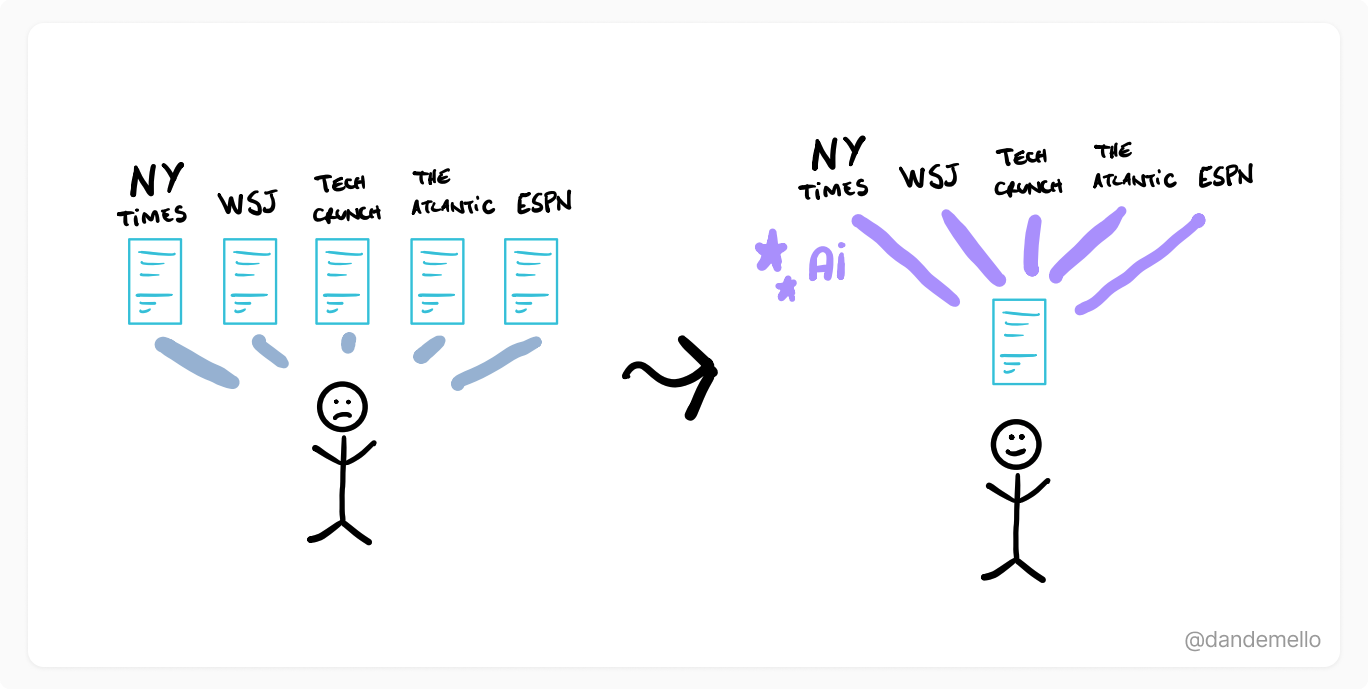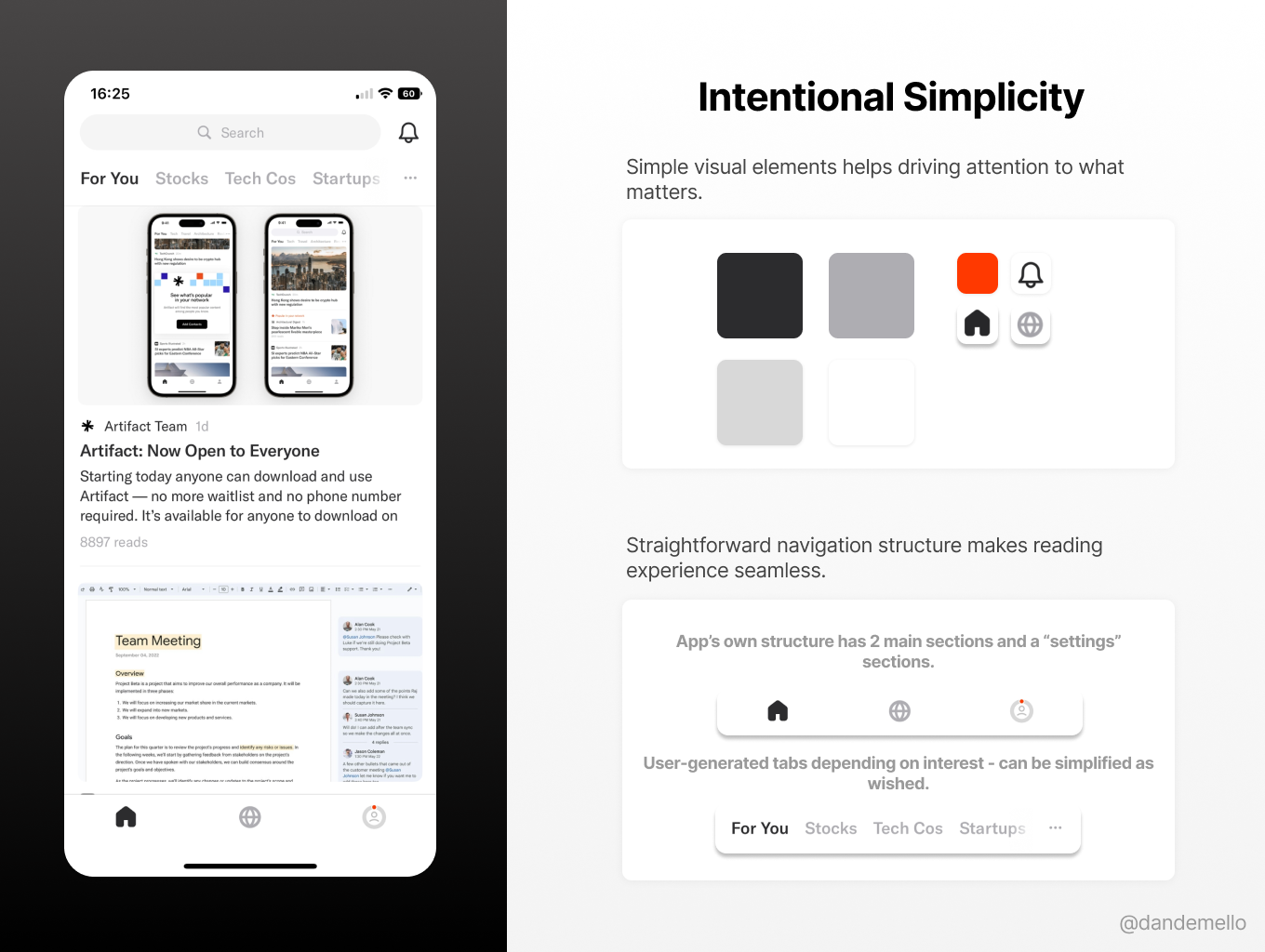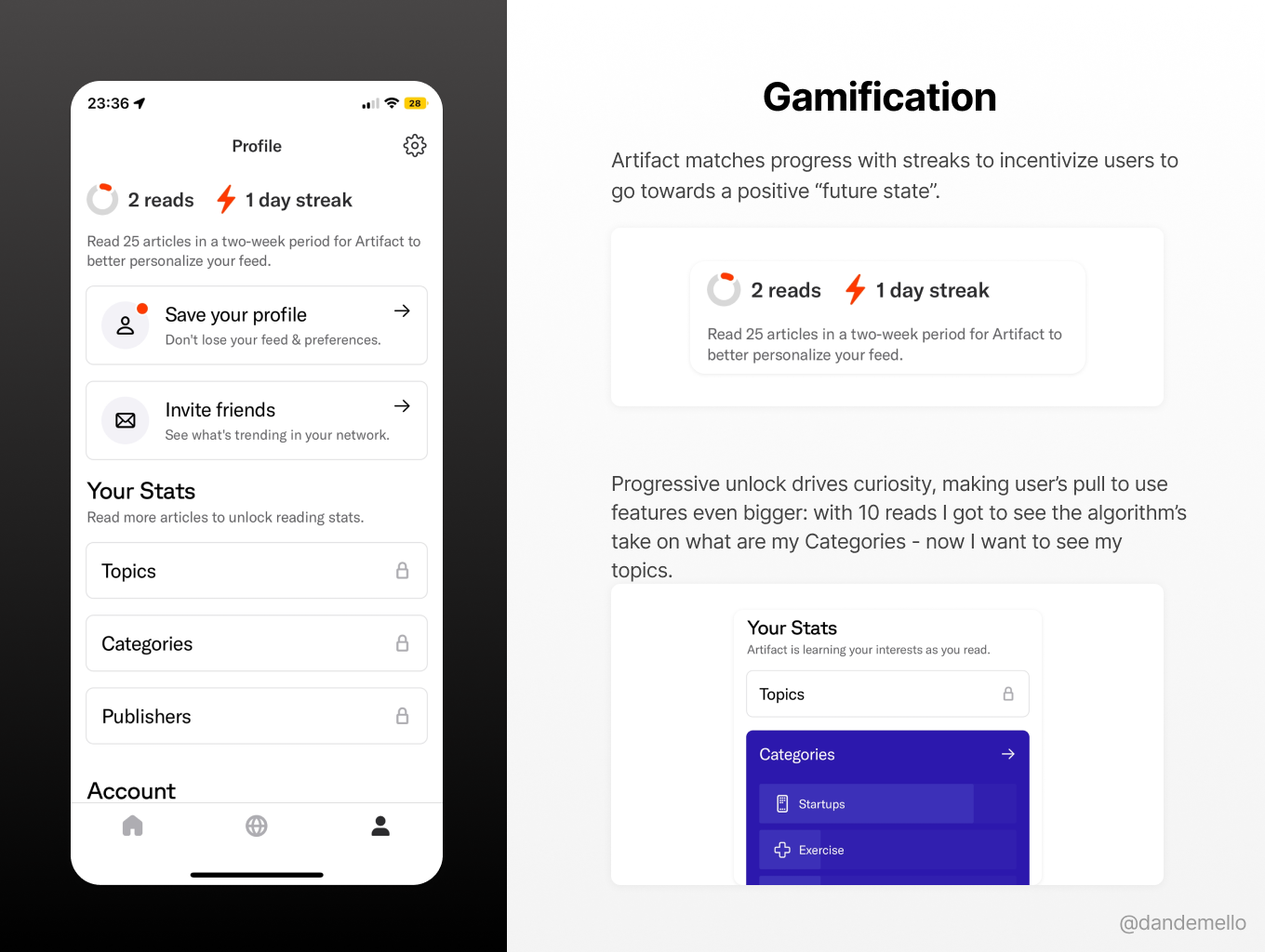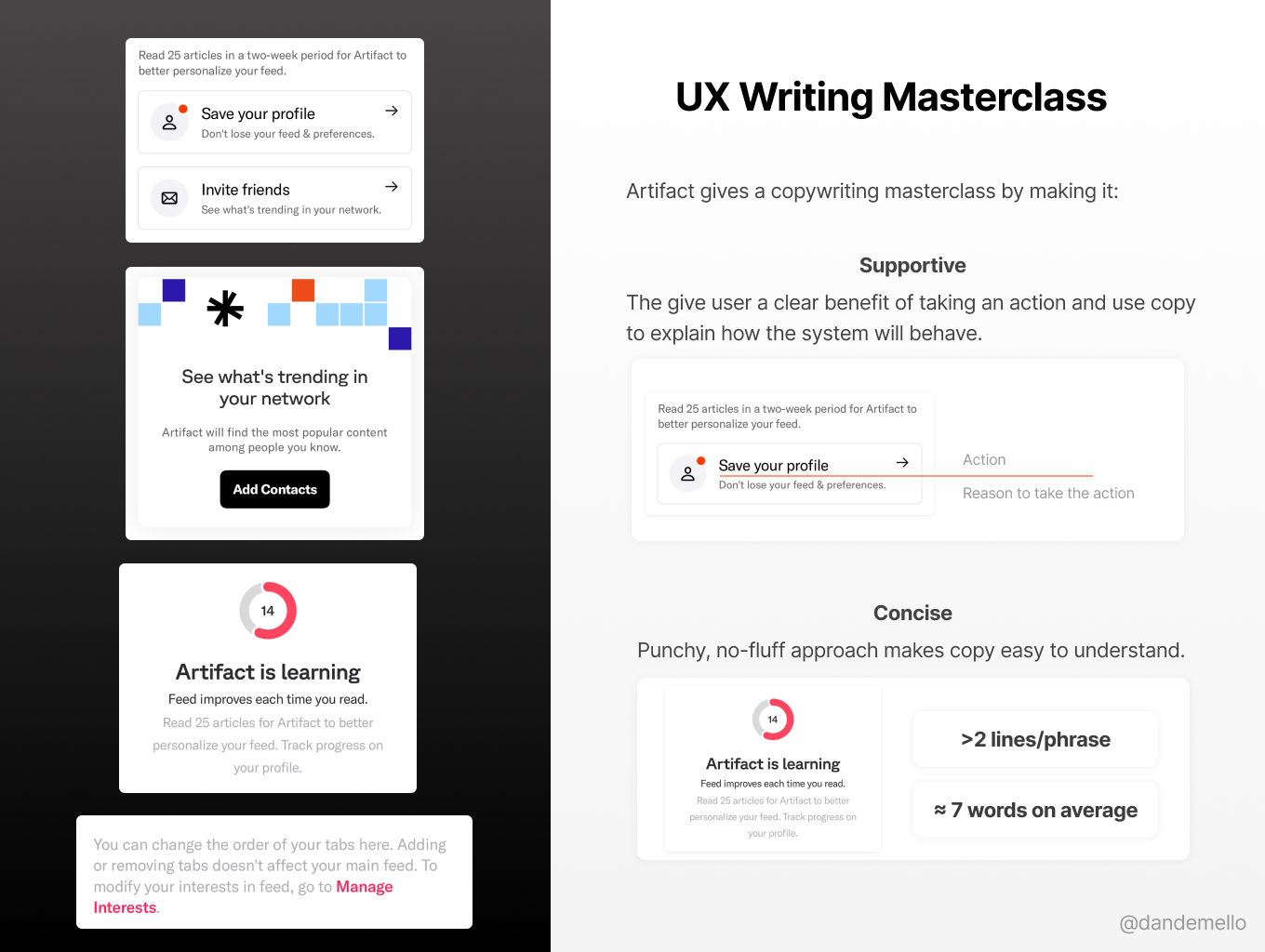#7 The UX of Artifact
Can Artifact change the way we consume news?
It’s not been long since the year started, and 2 things are almost certain about 2023:
AI will be the “current thing” in tech;
Algorithm bias will keep being a central topic of public debate.
In that scenario, Instagram co-founders Kevin Systrom and Mike Krieger publicly launched their new AI/media startup.
The Verge described it as “a kind of TikTok for text, though you might also call it Google Reader reborn as a mobile app or maybe even a surprise attack on Twitter.” Simply put, Artifact is a personalized news feed powered by Artificial Intelligence. It uses Machine Learning to curate news articles from many sources, based on each user interests and reading history.
We currently subscribe to outlets based on how our interests align with their content, but as complex individual there’s no single platform that encompass all our informational needs. That results in us checking feeds of many provides and scrapping through them to find what we’d like to read.
Artifact wishes to flip that dynamic and organize it all on a single feed that with time becomes a perfect reflection of you and your interests.
In its first years Instagram was a highly design-driven company so it’s fair to expect a similar approach from the founders.
At a first glance it’s already possible to see craftsmanship on the design of the product. Here are the UX lessons we can take from Artifact’s first version.
Intentional Simplicity
As a content platform, the app has to “get out of the way” and take into consideration how the main value comes from what users consume. This is specially true for an app that aims to provide content from various niches and formats.
Artifact chose to build a straightforward navigation using minimal visual elements — there are only 3 sections (with Settings), the brand’s main colors and black and white and iconography and typography are both bland.
With a simplified interface users can focus on the task at hand without being distracted by unnecessary features or fluffy visuals.
Gamification and leveraging curiosity
Progressive feature unlock is a design approach that gradually introduces new features to users over time. There are many use cases for this, a common one being to not overwhelm first-time users of applications with complex functionality.
Artifact use this for something else: since they are on Beta, the main goal is to learn from users and make the product better. To get the most engagement possible, they applied gamification by hiding the knowledge they have about you until you read more. There might be technical reasons to do so (i.e. after the first couple of reads the database is not yet enough to output reliable results), but the used this limitation well by creating curiosity.
The read count and copy also creates an expectation about how your feed will look like once the 25 reads are done.
Building trust and giving control to users
We all remember the awkward Zuckerberg hearings, when among other things a senator asked him why he was seeing ads for a specific chocolate brand.
Rightly so, publicly questioning platforms around their algorithms only grew in the last 5 years and in most platforms what they know about you is still a blackbox.
To build trust and give users even more control over their experience, Artifact provides the ability to see what they store about you, check if it’s right and fine tune if necessary.
This is specially interesting since algorithms tend to show people more of what they already see. That’s good but limited since many of us read not to keep being the same person but to get closer to the person we seek to be.
“Many of us read not to keep being the same person but to get closer to the person we seek to be.“
If I see that my patterns doesn’t match who I want to be, I can tweak the technology to help me move towards my goals.
The approach aligns with a recent declaration of Kevin Systrom during a 20VC episode: “I’m interested in core recommendations, I’m interested in the science of utilizing people’s tastes and profiles to make sure the world serves them”
UX writing masterclass
Great product design leverages every opportunity to support users or justify the system’s requests.
At every step of the way, whenever they prompt you for an action, Artifact makes if clear what’s in it for you — referring 2 centuries back to Benjamin Franklin: “Would you persuade, speak of interest, not of reason.”
This can also play in their favor since there’s a general lack of trust between users and product builders that use data to personalize an experience. “We’ll use this to do that” approach since the Beta version of the app is another good way to make sure trust is built from the get go.
This strategy is especially helpful when combined with a straightforward approach to copywriting: no phrases longer then 2 lines and averaging 7 words per phrase.
Conclusion
While the information age solved the problem of availability of knowledge, it created another issue: deciding how to allocate our time and money on different outlets.
Artifact seems to be on the right track to help people save time and have a better reading experience by leveraging AI to build a human-centered experience.
The main version of the app includes more features such as social components like groups and messaging — I’m curious to see the how they move forward while keeping the first version’s simplicity and focus.
Thanks for reading!








Great work, interesting issue